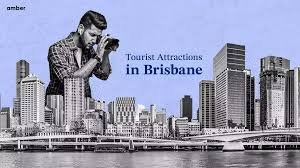
what time is it in brisbane australia
Introduction to Brisbane’s Time
When people ask, “What time is it in Brisbane, Australia?” the answer seems simple, yet it opens the door to a fascinating subject involving time zones, daylight cycles, history, and cultural impact. Brisbane, the capital city of Queensland, operates on Australian Eastern Standard Time (AEST), which is UTC+10. Unlike many other Australian states, Queensland—including Brisbane—does not observe daylight saving time. This means that while some neighboring states adjust their clocks twice a year, Brisbane remains consistent, offering both simplicity and occasional confusion for international travelers and business partners.
Time Zones in Australia: A Brief Overview
Australia is a vast country, spanning three primary time zones: Australian Western Standard Time (AWST, UTC+8), Australian Central Standard Time (ACST, UTC+9:30), and Australian Eastern Standard Time (AEST, UTC+10). Brisbane falls within the AEST zone, aligning with cities such as Sydney and Melbourne during the winter months. However, when daylight saving time begins in New South Wales, Victoria, and Tasmania, Brisbane remains unchanged. This means that in summer, Brisbane time is one hour behind Sydney and Melbourne. This divergence often creates the question, “What time is it in Brisbane right now compared to the rest of Australia?”
Why Queensland Doesn’t Use Daylight Saving
The absence of daylight saving in Brisbane is the result of historical and cultural decisions. In the late 20th century, several trials of daylight saving were conducted in Queensland. However, surveys revealed strong opposition, especially in the state’s northern and regional areas. People argued that longer daylight hours in the evenings did not suit the subtropical climate, where the sun rises early year-round. Farmers and outdoor workers in particular opposed it, preferring the consistency of a fixed clock system. As a result, Queensland chose not to adopt daylight saving permanently, setting Brisbane apart from many other major Australian cities.
Global Relevance of Brisbane Time
In an interconnected world, understanding Brisbane’s time is essential for business meetings, international travel, and online communication. For example, when it is 9:00 AM in Brisbane, it is 11:00 AM in Auckland, New Zealand, but only 7:00 AM in Tokyo. Meanwhile, in London, it may be the previous day at 11:00 PM. These differences emphasize the importance of time zone awareness in global markets. Brisbane is a growing hub for technology, education, and tourism, making accurate time coordination vital for global connections.
Tools for Checking Brisbane Time
With constant changes across the globe due to daylight saving in different regions, many people rely on online tools to verify Brisbane’s exact local time. Websites such as the Time and Date world clock provide real-time updates, ensuring accuracy. Another trusted resource is the World Clock on Time.is, which instantly displays Brisbane’s local time alongside other global cities. These tools remove confusion and help travelers, remote workers, and businesses avoid scheduling mistakes.
The Science Behind Timekeeping in Brisbane
Time in Brisbane, as in the rest of the world, is measured relative to Coordinated Universal Time (UTC). At UTC+10, Brisbane is ten hours ahead of the prime meridian in Greenwich, England. The Earth’s rotation and division into 24 time zones determine this system. Brisbane’s geographical location, closer to the equator compared to southern Australian capitals, means the city experiences less variation in daylight hours across the year. This makes daylight saving less practical, as the natural daylight rhythm already provides early sunrises and moderately long days throughout the year.
Cultural Impact of Brisbane’s Time
Time is not only a scientific construct but also a cultural rhythm. In Brisbane, the consistency of the clock affects daily routines, festivals, and social life. The early sunrise encourages an outdoor lifestyle, with joggers, cyclists, and surfers often starting their day before 6:00 AM. Evening activities are less extended than in cities that observe daylight saving, as the sun sets earlier in summer compared to Sydney or Melbourne. This influences nightlife, business operating hours, and even television broadcasting schedules. Brisbane’s time system reflects the lifestyle of Queenslanders, who embrace a balance between work, nature, and relaxation.
Time Differences Within Australia
Australia’s internal time differences can sometimes puzzle visitors. For example, if you travel from Brisbane to Adelaide, you must adjust your watch by 30 minutes because Adelaide runs on ACST (UTC+9:30). If you fly from Brisbane to Perth, the shift is two full hours backward to AWST (UTC+8). During daylight saving months, the gap between Brisbane and Sydney becomes one hour, even though geographically the two cities are quite close. These variations show how time in Australia is not uniform, requiring careful planning for flights, meetings, and broadcasts.
Brisbane Time and International Travel
Brisbane is a major gateway for flights across Asia, the Pacific, and North America. Knowing the local time is crucial for travelers adjusting to jet lag. For instance, flights from Los Angeles to Brisbane cross the International Date Line, meaning passengers often arrive two days after departure, despite spending about 13 hours in the air. Travelers from Europe face even greater shifts, as the time difference can exceed 10 hours. Understanding Brisbane’s place in the world clock helps reduce confusion, especially when booking flights, attending conferences, or scheduling remote work across time zones.
Business and Economic Implications
Brisbane’s economy is increasingly global, with significant sectors in finance, education, tourism, and technology. International business requires careful coordination of time zones. For example, when it is morning in Brisbane, financial markets in New York are closed, but Asian markets such as Tokyo and Hong Kong are active. Companies working with partners in multiple continents must carefully plan meetings to overlap with working hours in Brisbane. The consistency of no daylight saving time is both an advantage and a challenge, simplifying local schedules but occasionally complicating national coordination with Sydney or Melbourne.
Seasonal Experience of Time in Brisbane
Although Brisbane does not adjust clocks, the natural daylight cycle still changes through the seasons. In summer, the sun rises around 4:45 AM and sets close to 6:45 PM, creating long mornings and shorter evenings. In winter, sunrise is closer to 6:30 AM, with sunset around 5:00 PM. This pattern is very different from cities further from the equator, where daylight differences between summer and winter can span many hours. Brisbane’s relatively stable daylight hours are part of why many residents appreciate the absence of daylight saving.
The Psychological Side of Time in Brisbane
Consistency in timekeeping can also influence mental health and daily productivity. Unlike regions where clocks move forward and backward twice a year, Brisbane residents avoid the mild disorientation that often comes with daylight saving transitions. This may contribute to better sleep patterns and reduced stress. At the same time, some argue that missing out on extended evening daylight in summer can limit leisure opportunities. The psychological perception of time shows that clock policies affect not only schedules but also well-being.
Historical Context of Time in Brisbane
Brisbane’s adoption of AEST traces back to the 19th century, when standard time zones were introduced in Australia for railway and communication purposes. Before that, each town operated on its own local solar time, which became impractical as the country modernized. The introduction of standardized zones simplified trade, travel, and government coordination. Brisbane’s continued refusal to adopt daylight saving highlights the importance of local identity and regional preferences in shaping time policies.
Future of Time in Brisbane
Will Queensland ever adopt daylight saving in the future? This debate resurfaces every few years, often led by southern residents or businesses wanting to align with Sydney and Melbourne. However, public opinion remains divided. Unless significant cultural or economic changes occur, Brisbane is likely to maintain its consistent year-round time. With global digital tools and world clocks available, many argue there is less need for uniformity across states, as technology can instantly bridge the gap.
Conclusion
So, what time is it in Brisbane, Australia? The answer is that Brisbane runs on Australian Eastern Standard Time (UTC+10) year-round, without daylight saving adjustments. This makes the city unique within Australia, where many other states alter their clocks seasonally. Brisbane’s consistent timekeeping reflects its subtropical climate, cultural lifestyle, and historical decisions. For travelers, businesses, and global citizens, understanding Brisbane’s place in the world clock is essential for smooth communication and scheduling. In a world where time is both a scientific measurement and a social rhythm, Brisbane offers a model of stability and simplicity.






